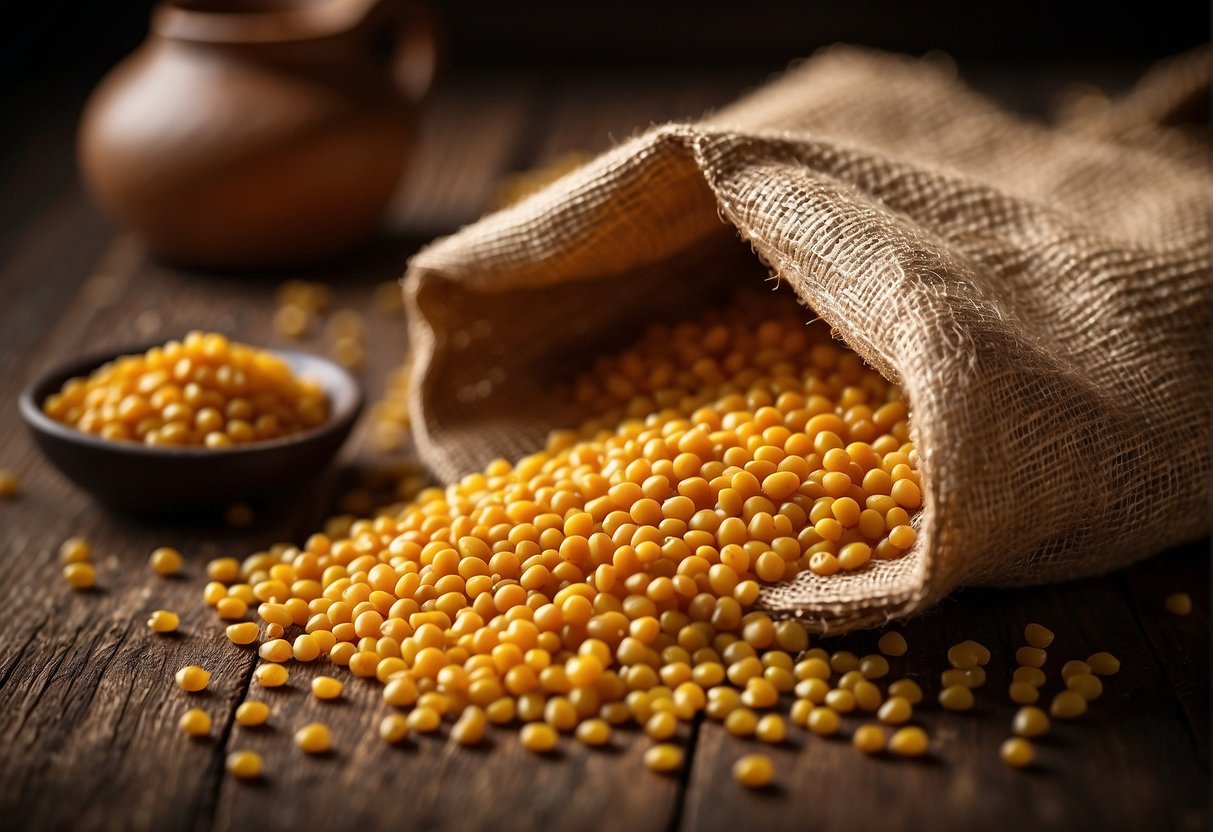When we first switched to eating gluten-free, I had a lot of questions—mostly standing in grocery aisles, turning packages over, and Googling things on my phone. One of the early ones was about chickpeas. Are chickpeas gluten-free? The short answer is yes, but I quickly realized that “gluten-free” isn’t always as simple as it sounds.
Since then, I’ve picked up a few things—like how to shop smart, what labels to trust, and how to actually use chickpeas in everyday meals without getting bored. Whether you’re avoiding gluten for medical reasons or just trying to clean up your diet, I hope some of what I’ve learned saves you time (and a few kitchen mishaps).

How Chickpeas Became a Go-To for Me
When we cleared out our pantry after going gluten-free, it felt like half our food disappeared overnight. No more pasta nights, no more toast in the morning, and forget about our favorite crackers. I found myself constantly on the lookout for foods that wouldn’t just fill the gap, but actually make us feel good.
That’s when chickpeas started popping up—not in some dramatic, life changing moment, but gradually. They showed up in a recipe, then in a cooking video, and eventually in a friend’s salad. It seemed worth a try, and honestly, they just worked. They didn’t upset anyone’s stomach, which was already a win in our house. The flavor was simple—not bland, just kind of easy to work with. And once I looked into it a bit more, I realized they’re actually pretty solid nutrition-wise. Lots of fiber and protein, plus essential nutrients like iron and folate that we weren’t getting enough of after ditching the usual bread and pasta.. Now I toss them into all kinds of meals without even thinking about it.
What I Learned About Chickpeas and Gluten Safety

Chickpeas themselves don’t contain gluten—that part is straightforward. But what caught me off guard was how easily gluten can sneak in during processing. It’s not just about the ingredients on the label; it’s also about where and how a food is handled.
For example, I learned that chickpeas processed on shared equipment with wheat can pick up traces of gluten. That matters if you’re cooking for someone with celiac disease or severe sensitivity—even tiny amounts can cause issues. These days, I don’t just glance at labels—I check for certifications that confirm the product meets stricter gluten-free standards.
Some of the labels I trust most are the GFCO certification, which keeps gluten under 10 parts per million, and the Certified Gluten-Free logo from the Gluten Intolerance Group. Both go beyond the FDA’s general standard of less than 20 ppm. When I see those symbols on chickpea flour, canned chickpeas, or snacks, I feel a lot more confident putting them in my cart.

Brands I Buy and Shopping Tips
I’ve found several brands that work well for chickpea products. For canned chickpeas, Eden Organic, Westbrae Natural, and Hunza Organic Garbanzo Beans work for me. The Hunza Organic Garbanzo Beans are one I keep buying because they taste fresh and the cans are always consistent. For chickpea flour, Bob’s Red Mill and King Arthur make versions that I’ve had good results with in baking.
I always read labels, even on products I’ve bought before, since companies sometimes change how they process foods. If a product doesn’t say “gluten-free” and I’m not sure about it, I contact the company to ask. Buying dried chickpeas in bulk from certified facilities usually costs about half as much as canned ones.
- Locally grown in the United States, these Garbanzo Beans are certified organic by the USDA
- Also known as Chickpeas, these legumes are packed to the brim with protein, fiber, and magnesium
- Valued for their fiber, Garbanzos are a favorite when served up in in falafels as a hummus ingredient
- Comes packaged in a high-quality green stand-up pouch for convenience and durability
- Save money when ordering these beans in larger quantities by purchasing 5 lbs or more!
Chickpeas in Packaged Foods: Hidden Gluten Traps
I made a mistake early on—thinking that if chickpeas were safe, then anything made with them would be too. Wrong! I’d just put whatever hummus looked good into my cart, never bothering to check the label. That bit me when I found out some of the flavored ones have sneaky ingredients.
Roasted chickpea snacks are another area where I’ve learned to be careful. The chickpeas themselves are fine, but the seasoning blends can be tricky. I’ve seen brands that dust their roasted chickpeas with flavoring that includes wheat flour or barley malt extract. The base product is gluten-free, but the final snack isn’t.
These days, I look for that “gluten-free” certification even when I’m buying something that should theoretically be safe. I also pay attention to those allergen warnings that say things like “processed in a facility that also handles wheat.” For our family, products with those warnings are usually okay, but if you’re dealing with severe celiac disease, you might want to skip them entirely.
The good news is that more companies are getting better about labeling. I’ve found several brands of hummus and roasted chickpea snacks that are clearly marked gluten-free, so I don’t have to play detective every time I shop.
Kid-Friendly and Meal Prep Chickpea Ideas
My kids are already grown-ups now—my eldest is 26 and my youngest is 21. But for those moms who are struggling with picky eaters, you’ll find these ideas useful.
Mini chickpea patties became a lunch box staple in our house back then. I would take cooked chickpeas and mash them with an egg, some cheese, and basic seasonings that my kids could handle—salt and a bit of garlic powder worked best. Then I’d shape them into small patties and bake them until the outside got crispy. The kids saw them as nuggets they could dip in ketchup or ranch. I used to prepare a large batch every Sunday and store them in the refrigerator for easy weekday meals.
My kids loved what they thought was cookie dough—chickpeas, peanut butter, honey, vanilla, and chocolate chips blended up. I never corrected them. I kept a container of this in the fridge for when they wanted something sweet.
Making smooth, creamy hummus or even that secretly-healthy chickpea cookie dough is so much easier when you’ve got a blender that can handle anything. I use the Vitamix A3500, and it turns chickpeas into silky perfection in seconds—no grit, no chunks, just smooth magic every time.

Vitamix A3500 Ascent Series Smart Blender, Professional-Grade, 48 oz. Container, Brushed Stainless Finish
- Program Settings: Five program settings ensure walk-away convenience and consistent results
- Container Capacity: 48-Ounce Container is ideal for small to medium-sized blends
- You’re in Control: Variable Speed Control and Pulse feature let you manually fine-tune the texture of any recipe
- Built-In Wireless Connectivity: The motor base can detect the container size and automatically adjust program settings and maximum blending times accordingly. Add a range of compatible containers and attachments, building a customized system designed to fit your needs
For meal prep, chickpea curry has become my go-to freezer meal. I freeze it in containers so I can just heat one up with rice on busy nights. It actually tastes even better after being frozen, which seems strange but works for me.
I also started making chickpea salad jars for my own lunches. I layer chickpeas, chopped vegetables, a little cheese, and dressing in mason jars. They stay fresh in the fridge for several days, and I can grab one on my way out the door. The trick is putting the dressing at the bottom so the vegetables don’t get soggy.
I pulse chickpeas and herbs in the food processor, add some chickpea flour so they stick together, then bake them instead of frying. I keep a bag in the freezer and pop them in the oven when we need protein fast.
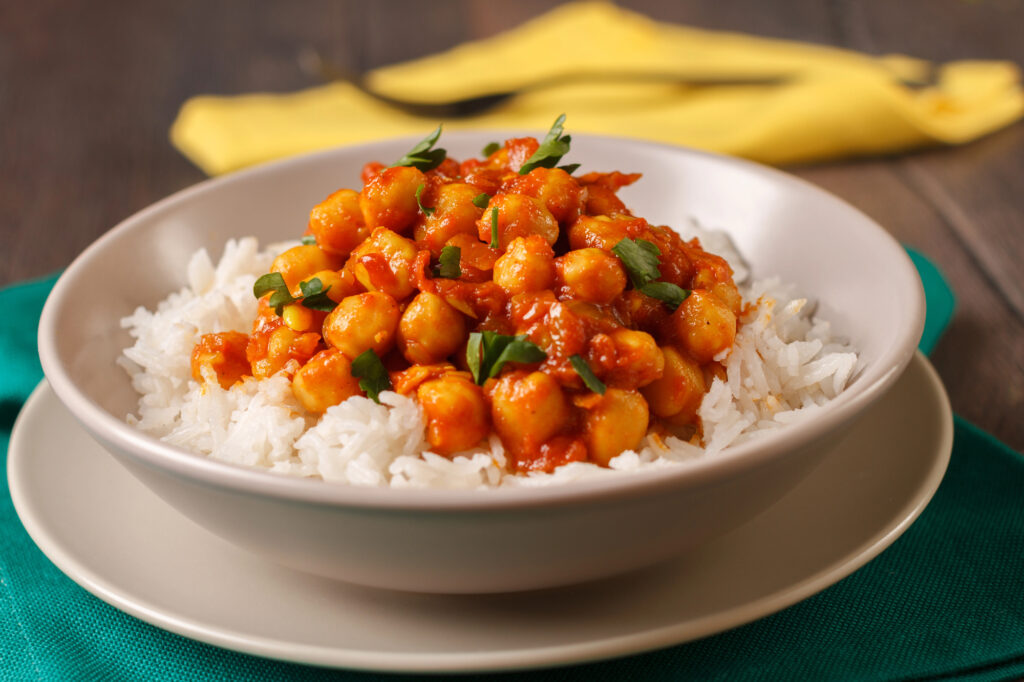
Practical Uses: Can You Build Meals Around Chickpeas?
For me, chickpeas became one of those quiet heroes in the kitchen. Once I figured out they were truly safe—no hidden gluten, no strange reactions—I started using them in just about everything. I’d toss them into salads for extra protein, stir them into soups and stews, or mash them up for quick spreads. They held up well, tasted great, and never upset anyone’s stomach.
Then I discovered chickpea flour, and that changed my baking game completely. It added this subtle nuttiness that actually made things taste better, not just “gluten-free.” I’ve used it in everything from flatbreads to pizza dough, and even cookies. Falafel nights have become a regular thing at our house, and I always keep homemade hummus in the fridge—mostly because it disappears fast.
My Favorite Chickpea Recipes
Recipe 1: Mediterranean Chickpea Power Bowl
This vibrant bowl is packed with flavor and nutrition, perfect for lunch or a light dinner.
Ingredients:
- 2 cups cooked chickpeas (or 1 can, drained and rinsed)
- 1 cucumber, diced
- 1 cup cherry tomatoes, halved
- 1/2 red onion, thinly sliced
- 1/2 cup kalamata olives, pitted
- 1/2 cup crumbled feta cheese
- 2 cups mixed greens
- 1/4 cup fresh parsley, chopped
For the dressing:
- 1/4 cup olive oil
- 2 tablespoons lemon juice
- 1 teaspoon dried oregano
- 1 clove garlic, minced
- Salt and pepper to taste
Instructions:
- In a large bowl, combine chickpeas, cucumber, tomatoes, red onion, olives, and feta.
- Whisk together all dressing ingredients in a small bowl.
- Pour dressing over chickpea mixture and toss to combine.
- Serve over mixed greens and garnish with fresh parsley.
- Let flavors meld for 15 minutes before serving for best taste.
This recipe serves 4 and keeps well in the refrigerator for up to 3 days.
Recipe 2: Crispy Chickpea Flour Socca
This French-inspired flatbread is naturally gluten-free and incredibly versatile.
Ingredients:
- 1 cup chickpea flour
- 1 cup water
- 3 tablespoons olive oil, divided
- 1/2 teaspoon salt
- 1/4 teaspoon black pepper
- 1/2 teaspoon dried rosemary (optional)
- Fresh herbs for garnish
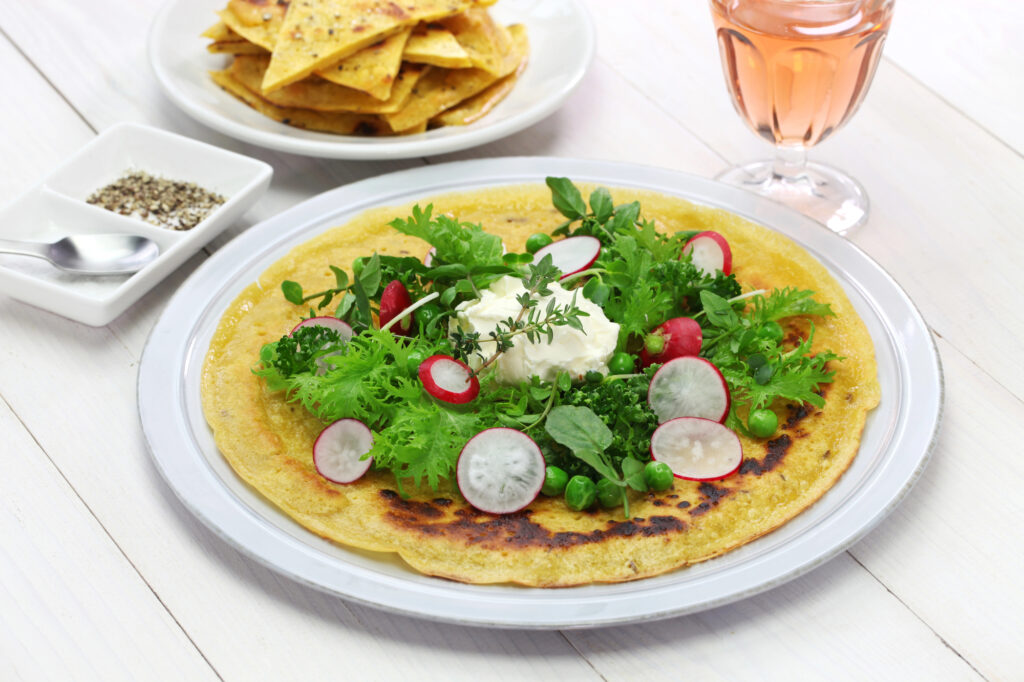
Instructions:
- Preheat the oven to 450°F (230°C) and place a 10-inch cast iron skillet inside to heat.
- In a bowl, whisk together chickpea flour, water, 2 tablespoons olive oil, salt, and pepper until smooth.
- Let the batter rest for 10 minutes to hydrate the flour.
- Carefully remove the hot skillet from the oven and add remaining tablespoon of olive oil, swirling to coat.
- Pour batter into a hot skillet—it should sizzle immediately.
- Sprinkle with rosemary if using and bake for 12-15 minutes until edges are crispy and center is set.
- Garnish with fresh herbs and serve immediately, cut into wedges.
Perfect as an appetizer, side dish, or base for toppings like roasted vegetables or cheese.
If you’re going to make socca the traditional way—crispy on the edges, tender in the middle—a cast iron skillet is your best friend. I finally invested in this gorgeous Le Creuset skillet, and I can’t tell you what a game-changer it’s been for recipes like these. It heats evenly, looks stunning on the table, and it lasts for decades.

Le Creuset Enameled Cast Iron Signature Iron Handle Skillet, 10.25″ (1-3/4 qt.), Sea Salt
- Enameled cast iron delivers superior heat distribution and retention
- Ready to use, requires no seasoning
- Easy-to-clean and durable enamel resists dulling, staining, chipping and cracking
- Black satin interior enamel is specially formulated for higher surface temperatures to enhance cooking performance
Global Chickpea Traditions and Troubleshooting
When we cut out gluten, I had to get creative fast. I never really paid much attention to chickpeas before. But after going gluten-free, I started seeing them in recipes everywhere. One night I tried making chana masala—not even sure why, I just had the ingredients—and it turned out way better than I expected. It’s spicy, kind of cozy, and with rice, it just works. We’ve made it a bunch of times since.
I also tried making farinata, kind of like a chickpea flatbread with rosemary and sea salt. Super simple, but it feels fancy when you slice it into wedges. And there’s this African-style stew I found that mixes chickpeas with sweet potatoes and spices—total comfort food, especially over quinoa or gluten-free couscous.
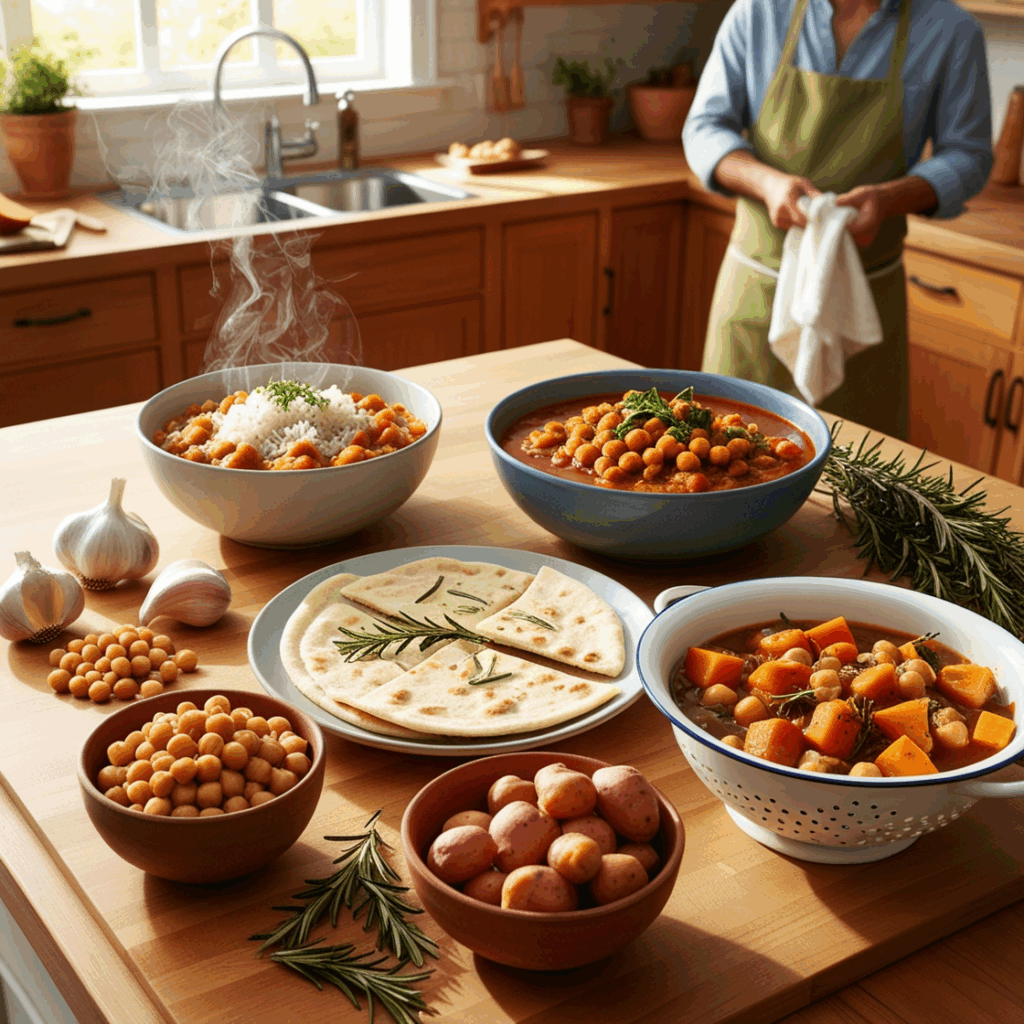
That said, I won’t pretend chickpeas were perfect for us right away. They caused some stomach drama at first—lots of bloating. I eventually learned it’s because of something called oligosaccharides (basically a type of sugar). Soaking dried chickpeas overnight helped a lot, and even with canned ones, I rinse them like crazy. It made a real difference. Gradual introduction and moderation help too, especially when eating other high-fiber foods.
Why Are Chickpeas Gluten-Free and Perfect for Our Lifestyle
Are chickpeas gluten-free enough to trust completely? For our family, yes. For us, chickpeas just make sense. They don’t have gluten, they’re cheap, easy to find, and way more nutritious than a lot of the food we gave up. I’ve used them in everything from cookies to stews, and they somehow always fit.
That said, I’ve learned not to assume anything. Just because it looks safe doesn’t mean it is. If the label doesn’t clearly say “gluten-free,” I either reach out to the company or skip it. It’s not worth the guesswork—especially if someone in your house has celiac.
You might’ve come here just wondering if chickpeas are gluten-free, but I hope you see now—they’re more than just a backup plan. They’ve become a big part of how we eat: simple, tasty, and super flexible.

A Little Chickpea Wisdom
I didn’t exactly choose the gluten-free life—it sort of landed in my lap. And like anyone facing a major pantry overhaul, I panicked a little. But somewhere between the label-reading marathons and trial-and-error dinners, I found chickpeas—and they’ve been saving meals ever since.
They’re not flashy. They’re not trendy. But they work. They’ve helped me cook smarter, eat better, and actually enjoy the process. Whether it’s a batch of homemade hummus, a quick curry, or something sweet that passes for cookie dough, chickpeas show up and do their job.
So if you’re just getting started, here’s my challenge: let chickpeas surprise you. Try a new recipe this week—something bold, something totally different. Just make sure to check your labels, rinse well, and keep it simple. Pretty soon, you might find yourself reaching for chickpeas without even thinking about it.
And just so you know—eating gluten-free doesn’t have to be dull. Not even close. It just means finding your new go-to—and chickpeas? They might just be it.
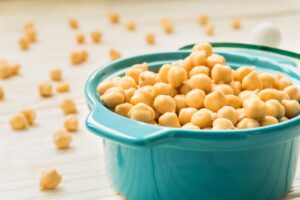
*We may earn a commission for purchases made using our links. Please see our disclosure to learn more.



